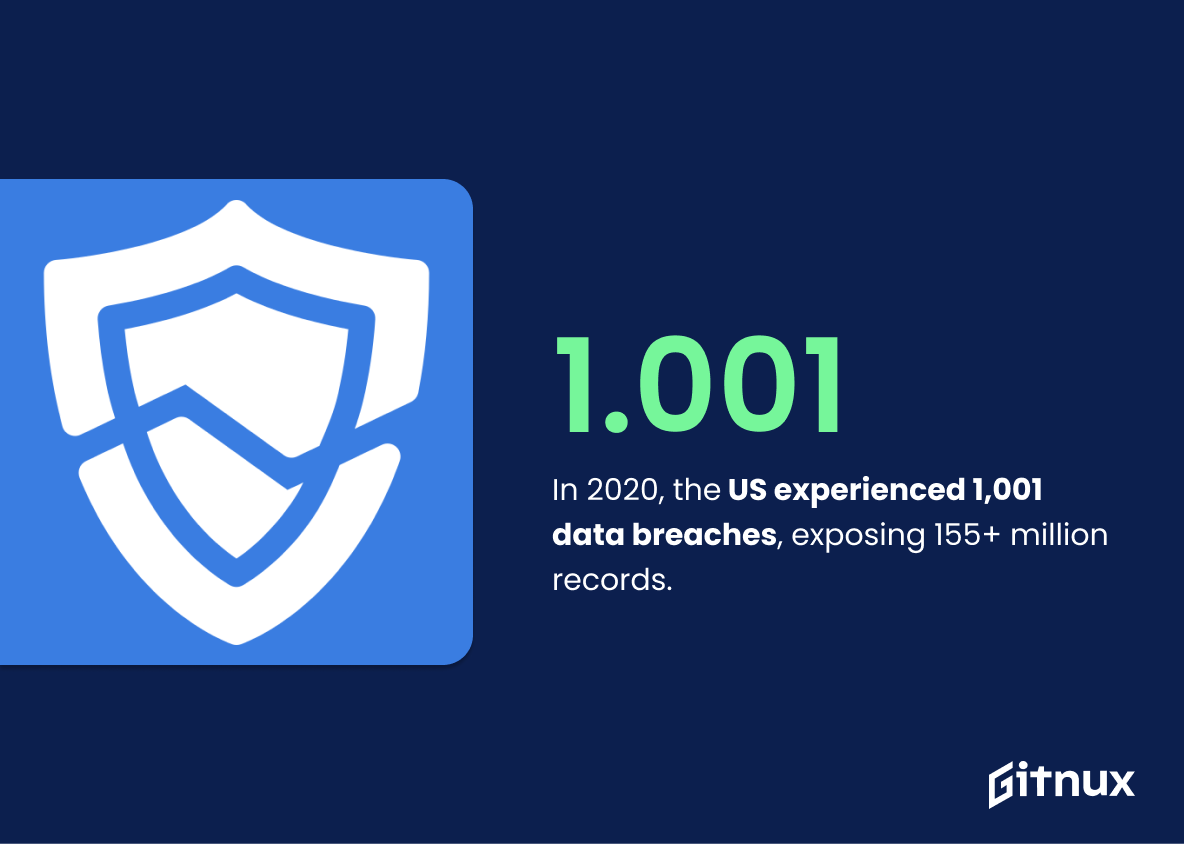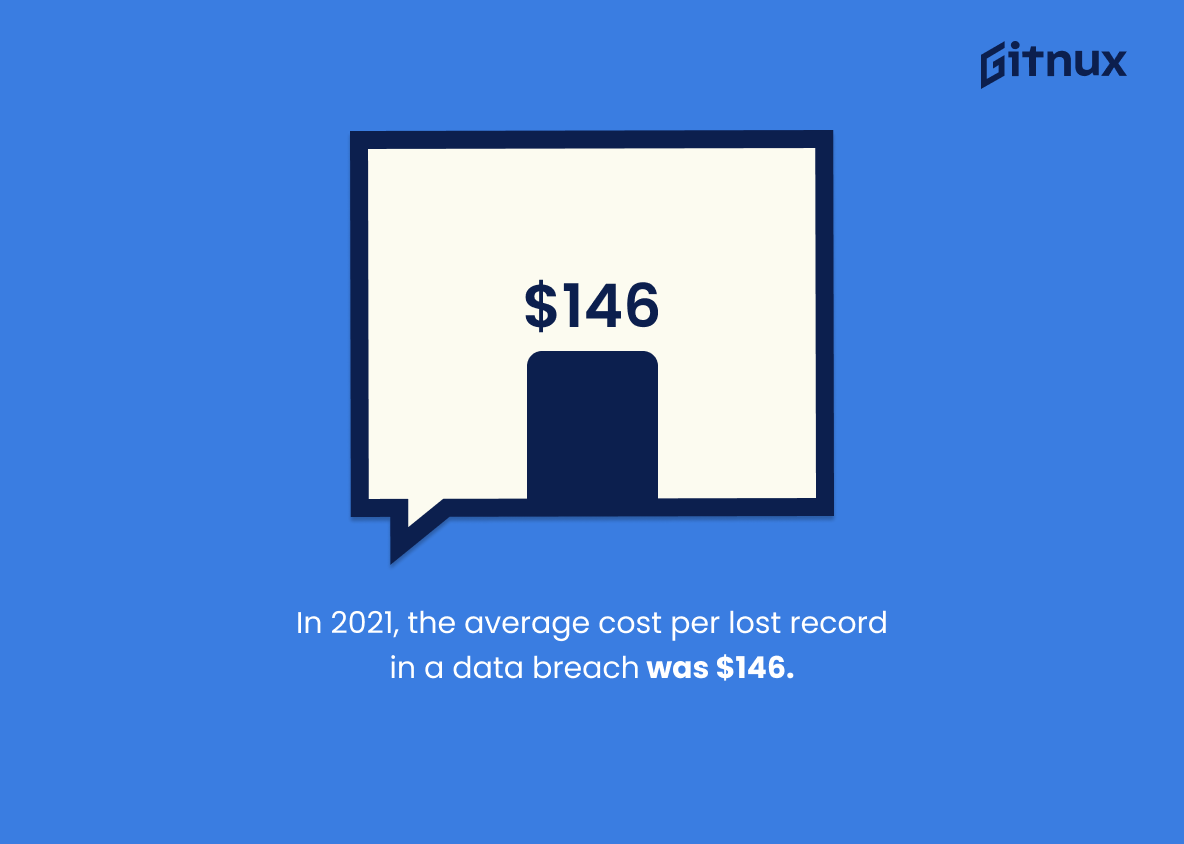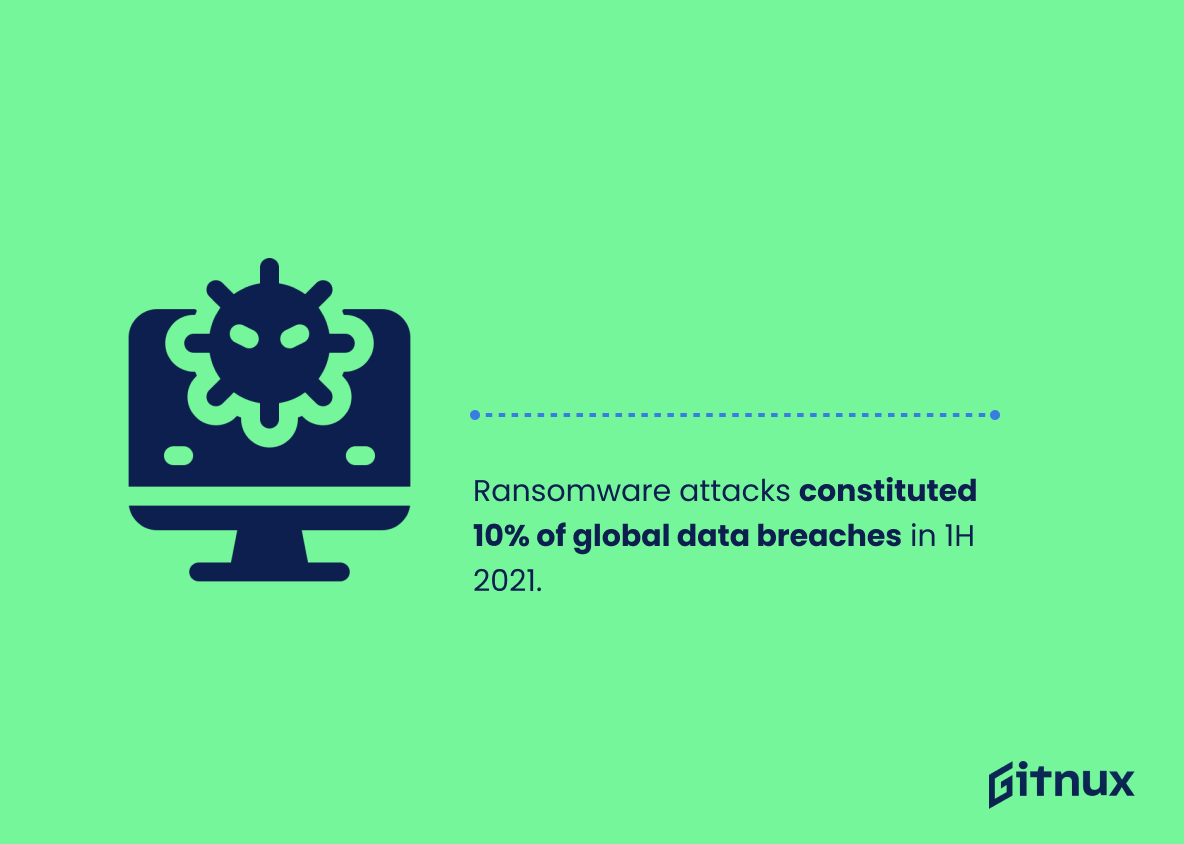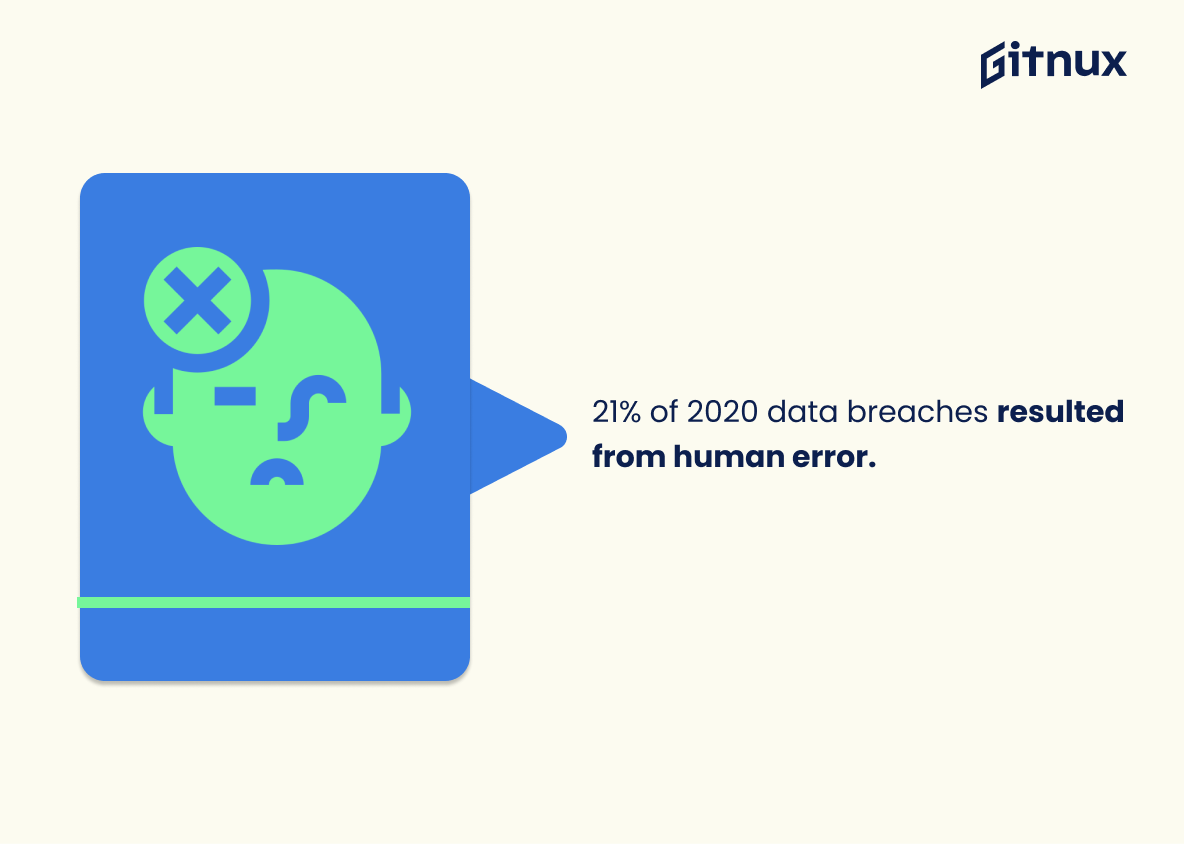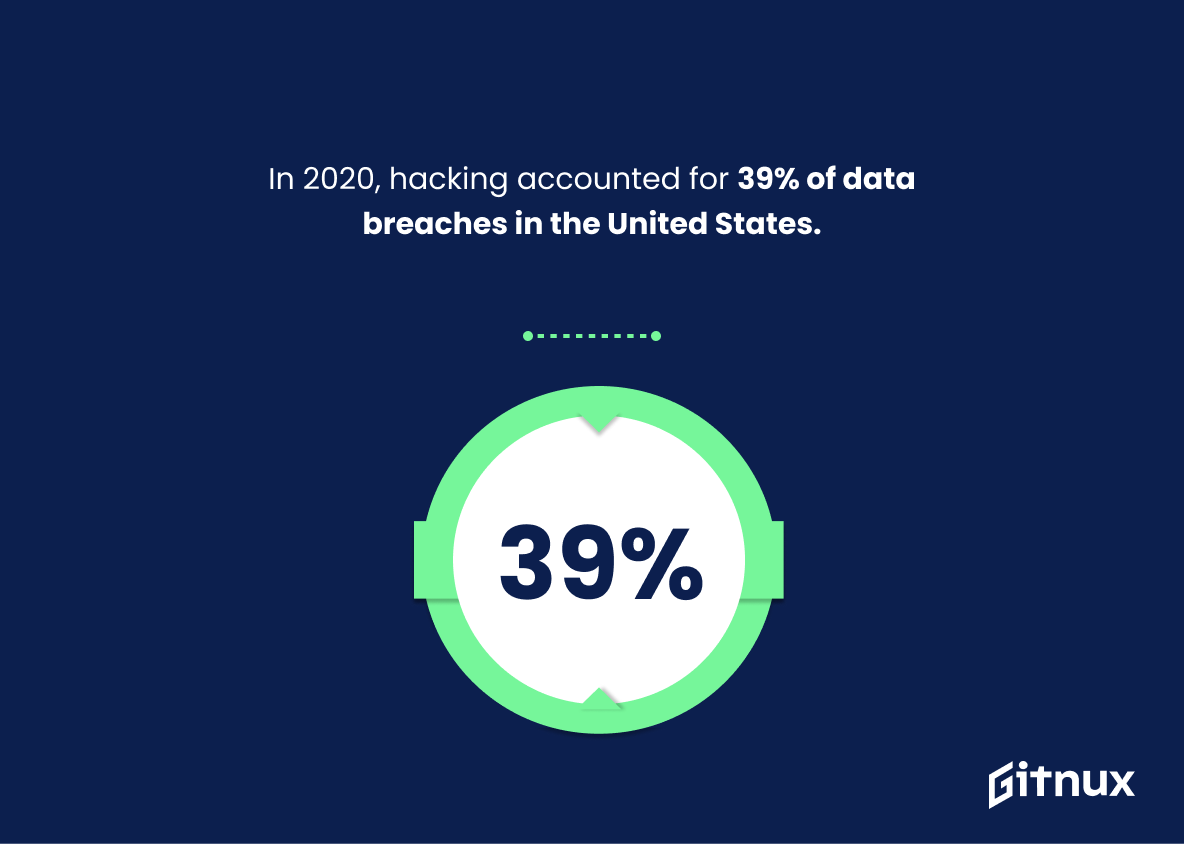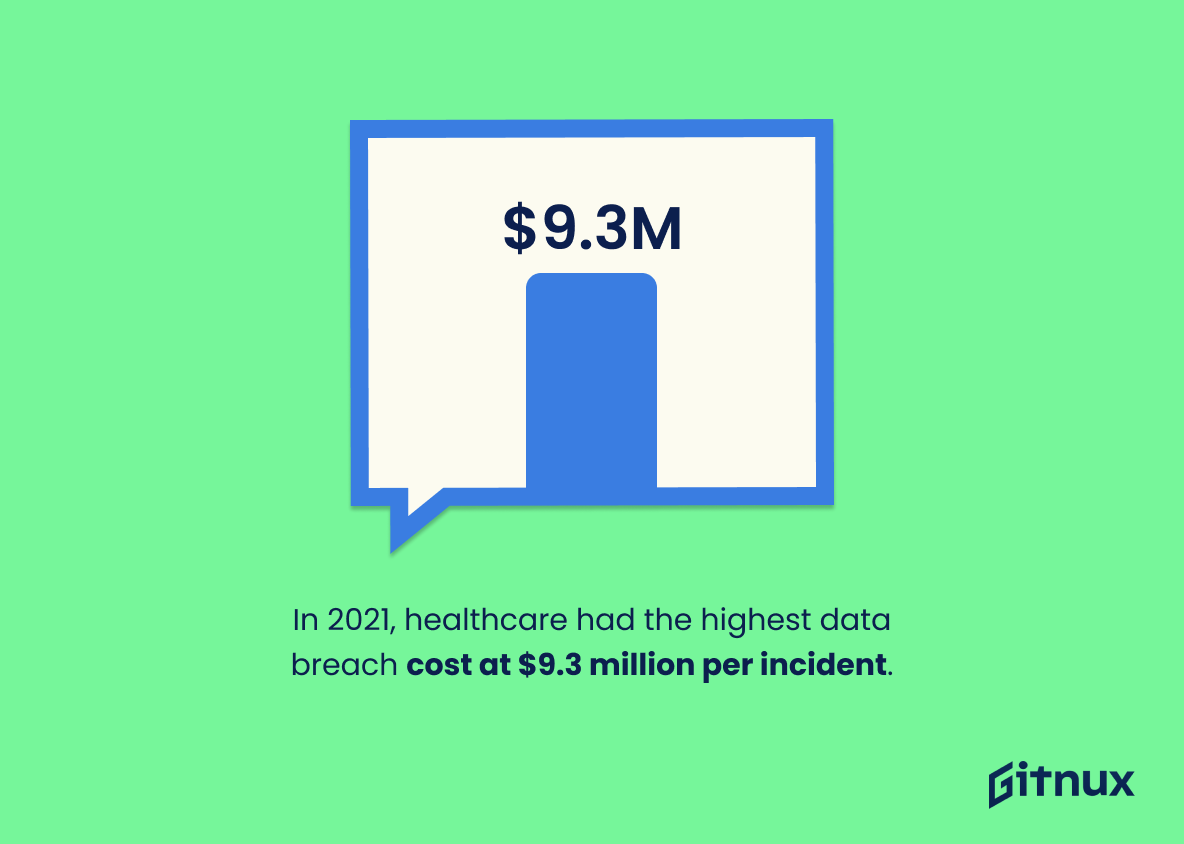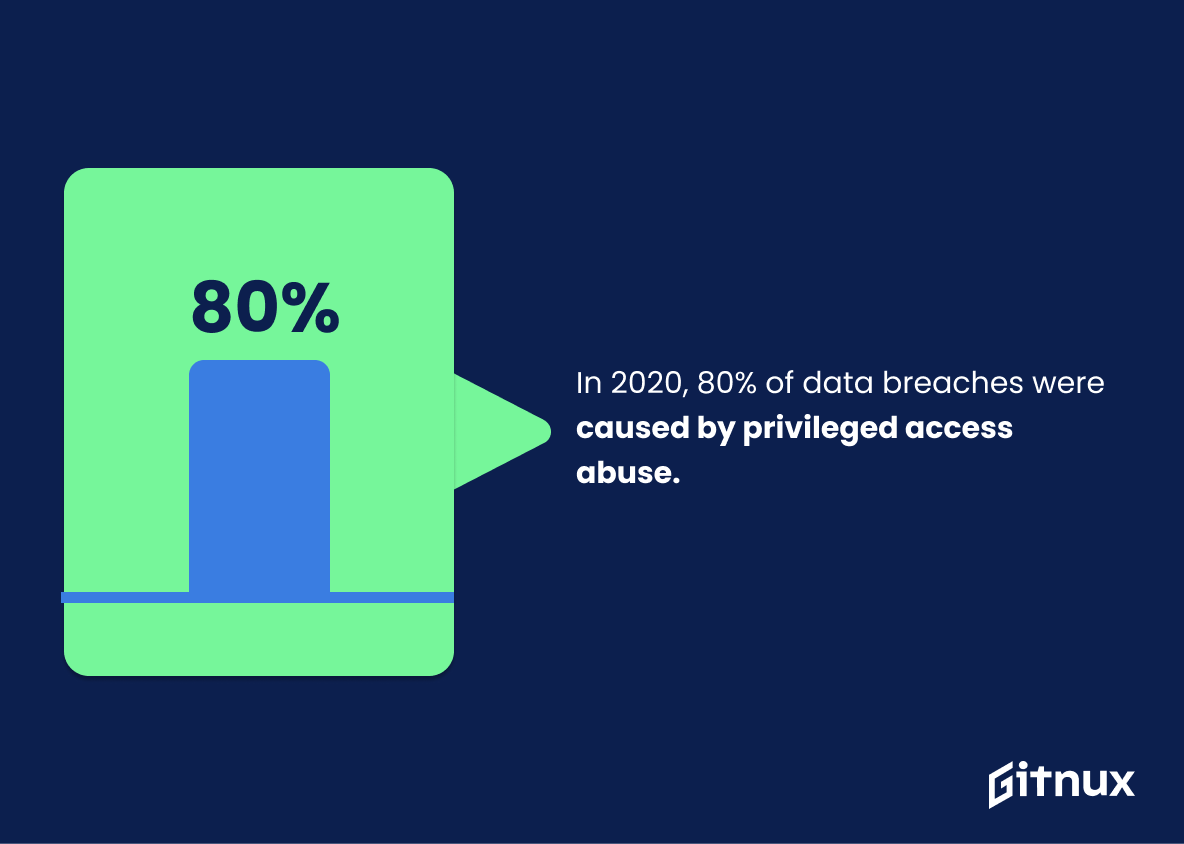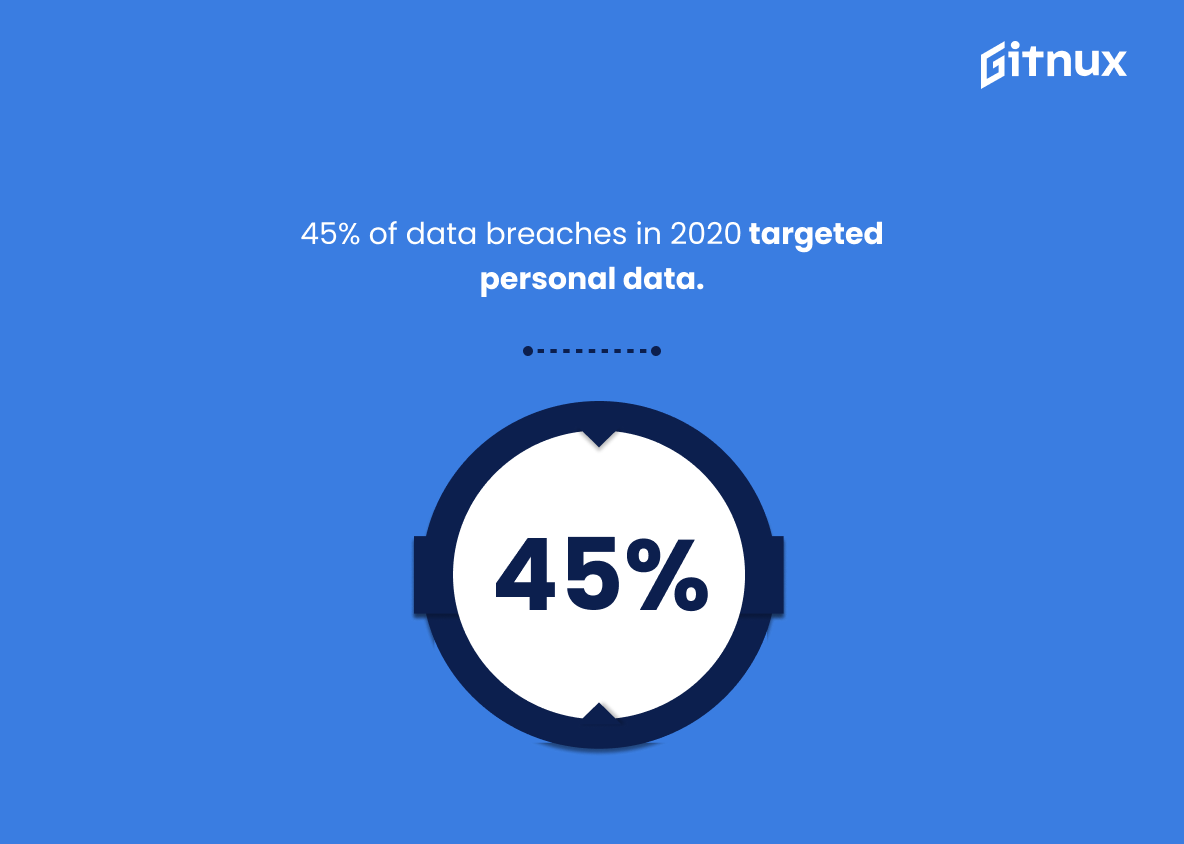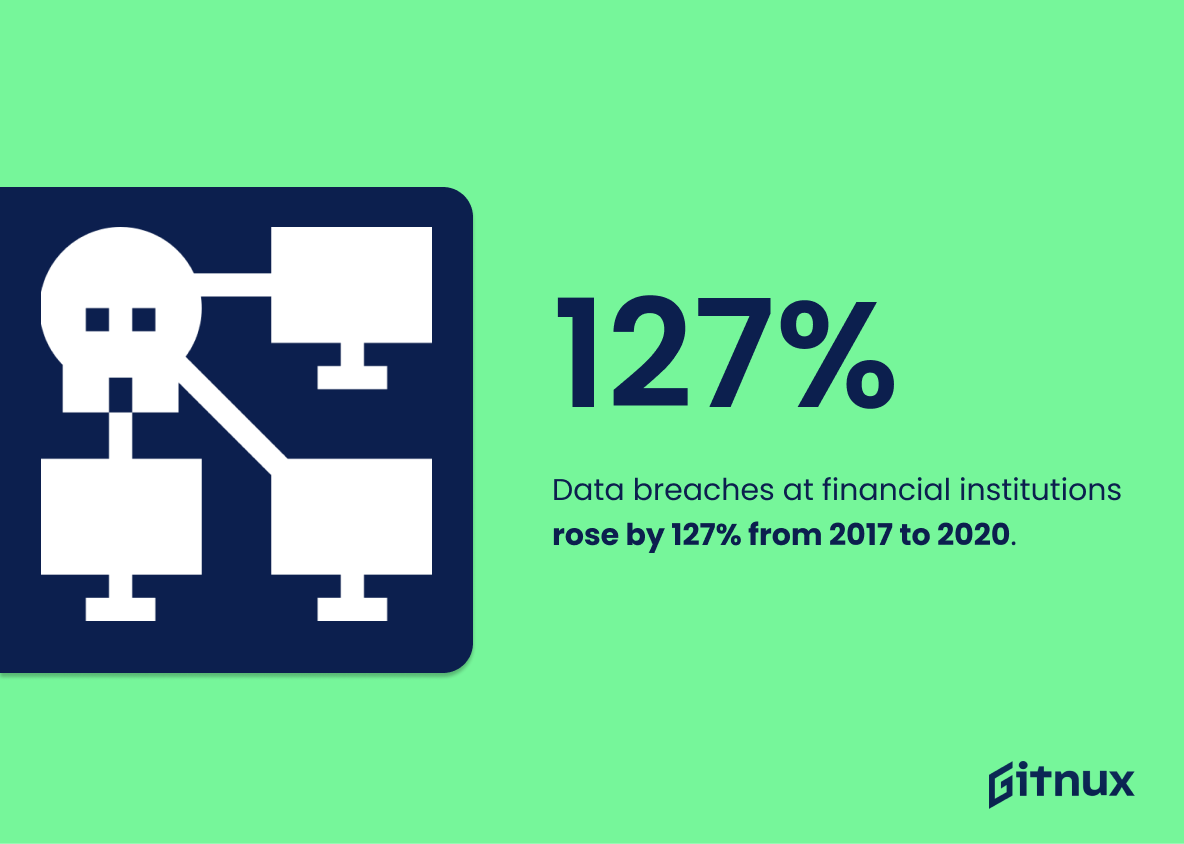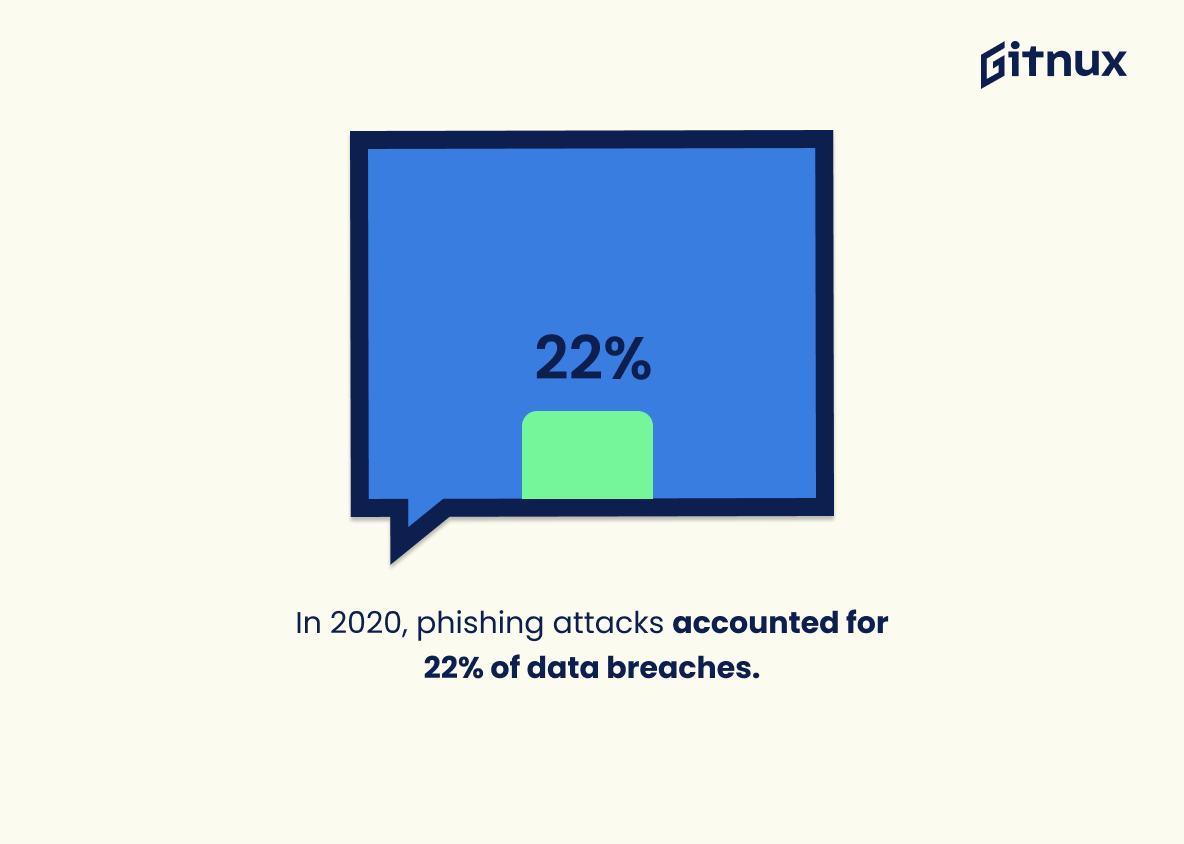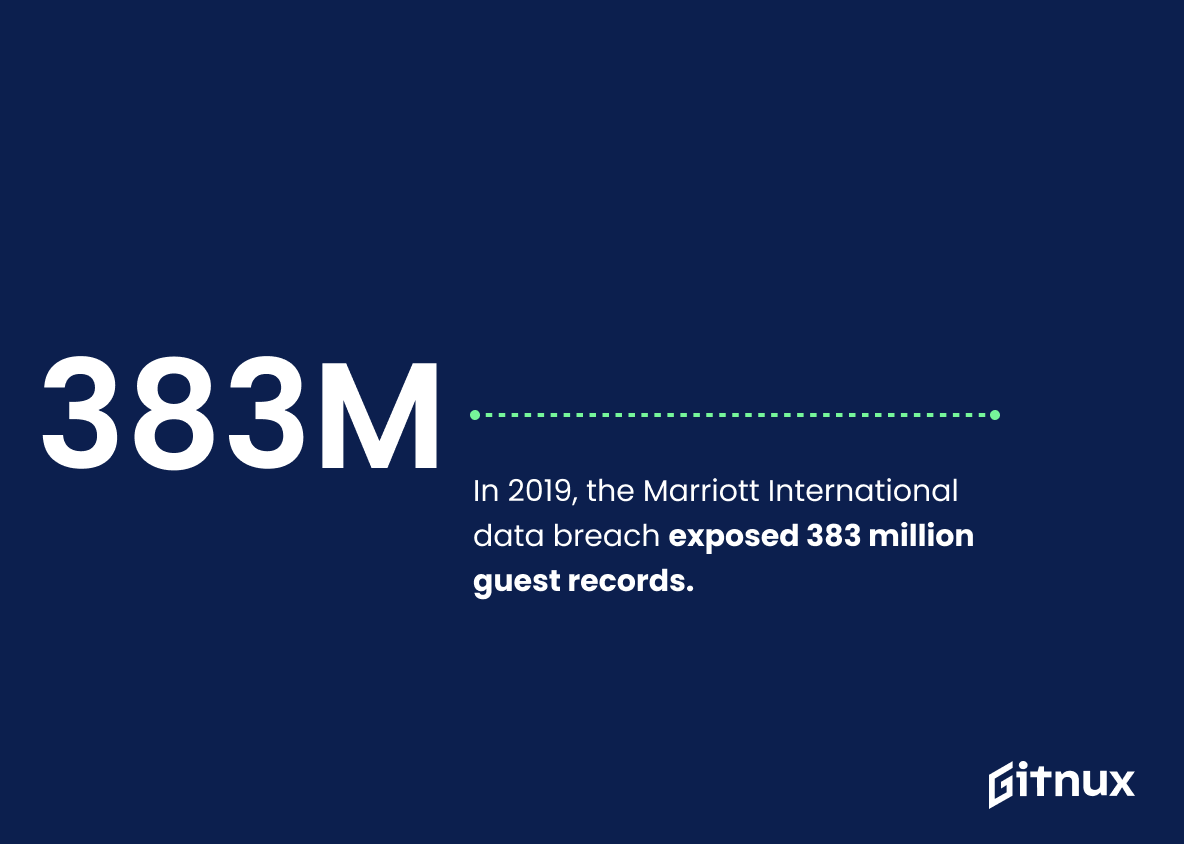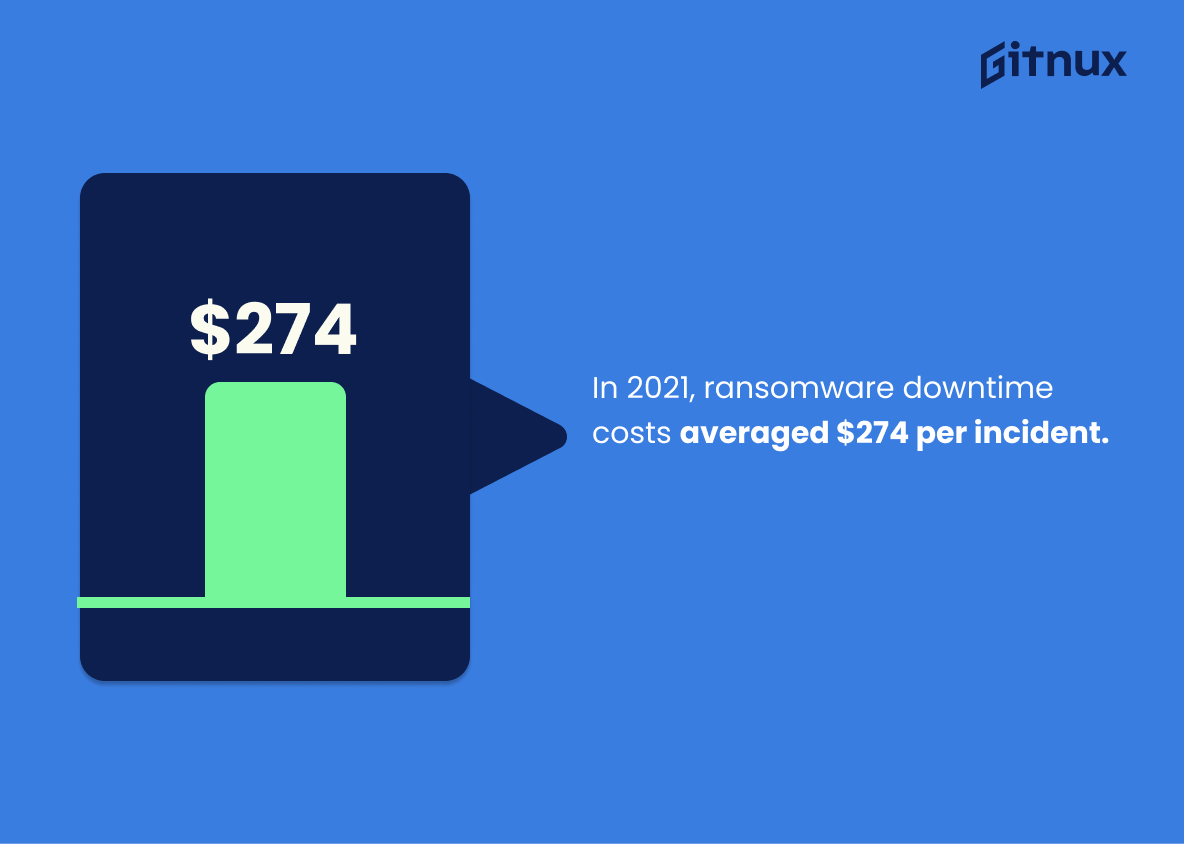Data breaches are a growing concern for businesses and organizations of all sizes. In 2021, the average cost of a data breach was $4.24 million according to IBM Security’s Data Breach Cost Report. North America saw 237 publicly reported data breaches in Q2 2021 alone, with 155 million records exposed in the United States during 2020. The average cost per lost or stolen record is now estimated at $146 while ransomware attacks account for 10% of all global data breaches reported in 1H 2021. Human error accounted for 21% of 2020’s total number of data breaches, followed by hacking which caused 39%. A staggering 36 billion records were exposed globally due to these incidents last year; healthcare had the highest cost per breach at an alarming rate of $9.23 million each time it occurred throughout 2021 so far. It takes 287 days on average to identify and contain a single incident as 80% are attributed to privileged access abuse and 45% target personal information specifically – both figures from 2020 statistics respectively – while financial motivation drove 45%, too that same year.. Financial institutions have seen their own share increase 127%, between 2017-2020, with phishing involved 22 percent more often than not when looking back over 12 months ago.. One example being Marriott International who suffered 383 million guest record exposure through one attack only two years ago. Ransomware downtime costs averaged out at around 274k this past year whilst 4 billion credentials found up sale on dark web since 2015 can be linked directly back here again. Mid-market companies weren’t exempt either as 37 percent experienced some form if intrusion within U S borders but 95 percent came from just three industries: government retail & technology combined making cyber security awareness even more important today than ever before.
This statistic is a stark reminder of the immense financial burden that data breaches can impose on organizations. It highlights the need for organizations to invest in robust security measures to protect their data and minimize the risk of a costly breach.
In Q2 2021, there were 237 publicly reported data breaches in North America.
This statistic serves as a stark reminder of the prevalence of data breaches in North America. It highlights the need for organizations to take proactive steps to protect their data and ensure that their customers’ information is secure. It also serves as a warning to individuals to be vigilant in protecting their personal information and to take steps to minimize their risk of becoming a victim of a data breach.
Data Breaches Statistics Overview
In 2020, there were 1,001 data breaches with more than 155 million records exposed in the United States alone.
This statistic is a stark reminder of the sheer magnitude of data breaches that occurred in the United States in 2020. It highlights the need for organizations to take proactive steps to protect their data and ensure that their systems are secure. It also serves as a warning to individuals to be vigilant about their online security and take steps to protect their personal information.
In 2021, the average cost per lost or stolen record in a data breach is $146.
This statistic is a stark reminder of the financial implications of data breaches. It highlights the fact that data breaches can be costly, with each lost or stolen record costing an average of $146. This serves as a warning to organizations to take the necessary steps to protect their data and ensure that their systems are secure.
Ransomware attacks account for 10% of all data breaches reported globally in 1H, 2021.
This statistic is a stark reminder of the prevalence of ransomware attacks in the world of data breaches. It serves as a warning to organizations to take the necessary steps to protect their data from malicious actors. It also highlights the importance of having a comprehensive cybersecurity strategy in place to mitigate the risk of a data breach.
21% of data breaches in 2020 were caused by human error.
This statistic is a stark reminder of the importance of proper data security protocols and training. It highlights the need for organizations to take proactive steps to ensure that their employees are aware of the risks associated with data breaches and how to avoid them. By understanding the potential consequences of human error, organizations can take steps to reduce the likelihood of a data breach occurring.
In 2020, 39% of data breaches in the United States were caused by hacking.
This statistic is a stark reminder of the importance of cybersecurity in the United States. It highlights the need for organizations to take proactive steps to protect their data from malicious actors. It also serves as a warning to individuals to be aware of the potential risks associated with online activities and to take steps to protect their personal information.
Data breaches exposed 36 billion records in the first half of 2020.
This statistic is a stark reminder of the sheer magnitude of data breaches that have occurred in the first half of 2020. It serves as a wake-up call to organizations and individuals alike to take the necessary steps to protect their data and ensure that their information is secure.
Healthcare was the industry with the highest cost per data breach in 2021, with $9.23 million per breach.
This statistic is a stark reminder of the immense financial burden that data breaches can impose on businesses in the healthcare industry. It highlights the need for healthcare organizations to invest in robust security measures to protect their sensitive data and minimize the risk of costly data breaches.
The average time to identify and contain a data breach in 2021 is 287 days.
This statistic is a stark reminder of the importance of data security. It highlights the fact that, even with the most advanced security measures in place, it can take almost a year to identify and contain a data breach. This emphasizes the need for organizations to remain vigilant and take proactive steps to protect their data.
80% of data breaches are caused by privileged access abuse in 2020.
This statistic is a stark reminder of the importance of monitoring and controlling privileged access. It highlights the need for organizations to take proactive steps to protect their data from malicious actors who may exploit privileged access to cause data breaches. By understanding the risks associated with privileged access abuse, organizations can take the necessary steps to ensure their data is secure and protected.
45% of data breaches in 2020 targeted personal data.
This statistic is a stark reminder of the importance of protecting personal data. It highlights the fact that data breaches are a serious threat to individuals’ privacy and security, and that organizations must take steps to ensure that their data is secure. It also serves as a warning to individuals to be aware of the risks associated with sharing their personal information online.
The number of data breaches at financial institutions increased by 127% from 2017 to 2020.
This statistic is a stark reminder of the growing threat of data breaches at financial institutions. It highlights the need for organizations to take proactive steps to protect their customers’ data and ensure that their systems are secure. It also serves as a warning to consumers to be vigilant and take steps to protect their personal information.
In 2020, phishing attacks were involved in 22% of data breaches.
This statistic is a stark reminder of the importance of data security in the digital age. It highlights the fact that phishing attacks are a major contributor to data breaches, and that organizations must take steps to protect their data from these malicious activities. By understanding the prevalence of phishing attacks, organizations can better prepare themselves to prevent and respond to data breaches.
In 2019, 383 million guest records were exposed in the Marriott International data breach.
This statistic serves as a stark reminder of the potential consequences of data breaches. It highlights the sheer scale of the Marriott International data breach, with 383 million guest records exposed, and serves as a warning to other companies to take the necessary steps to protect their customers’ data.
In 2021, ransomware downtime costs averaged $274,200 per incident.
This statistic serves as a stark reminder of the financial implications of ransomware attacks. It highlights the importance of investing in data security measures to protect against such incidents, as the cost of a single attack can be devastating. Furthermore, it serves as a warning to organizations to take data breaches seriously and to ensure that they have the necessary safeguards in place to protect their data.
Conclusion
Data breaches are a serious issue that can have costly consequences for organizations and individuals alike. The statistics presented in this blog post demonstrate the prevalence of data breaches, as well as their increasing cost and complexity. In 2021, the average cost of a data breach was $4.24 million, with healthcare having an even higher price tag at $9.23 million per incident on average. Ransomware attacks accounted for 10% of all reported global incidents in 1H 2021 while human error caused 21% of 2020’s total number of data breaches worldwide. Additionally, 45% targeted personal information such as credentials or financial records which were found to be sold on dark web markets between 2015-2020 resulting from these security events; 95% came from government, retail and technology industries alone last year according to reports by CyberNews & Cybint Solutions respectively . It is clear that organizations must take proactive steps towards protecting themselves against potential threats if they wish to avoid becoming victims themselves – whether it be through employee training programs or investing in advanced cybersecurity solutions like identity access management (IAM).
References
0. – https://www.riskbasedsecurity.com
1. – https://www.kivuconsulting.com
2. – https://www.statista.com
3. – https://www.idginsiderpro.com
4. – https://www.us.norton.com
5. – https://www.cyberdefensemagazine.com
6. – https://www.techrepublic.com
7. – https://www.securityintelligence.com
8. – https://www.securityboulevard.com
9. – https://www.information-age.com
10. – https://www.varonis.com
11. – https://www.forbes.com
12. – https://www.ibm.com
ZipDo, cited June 2023: Data Breaches Statistics
